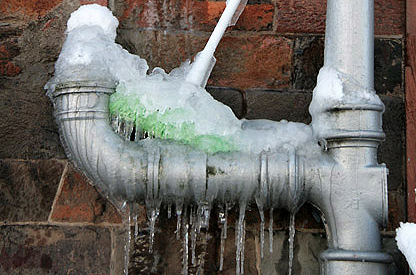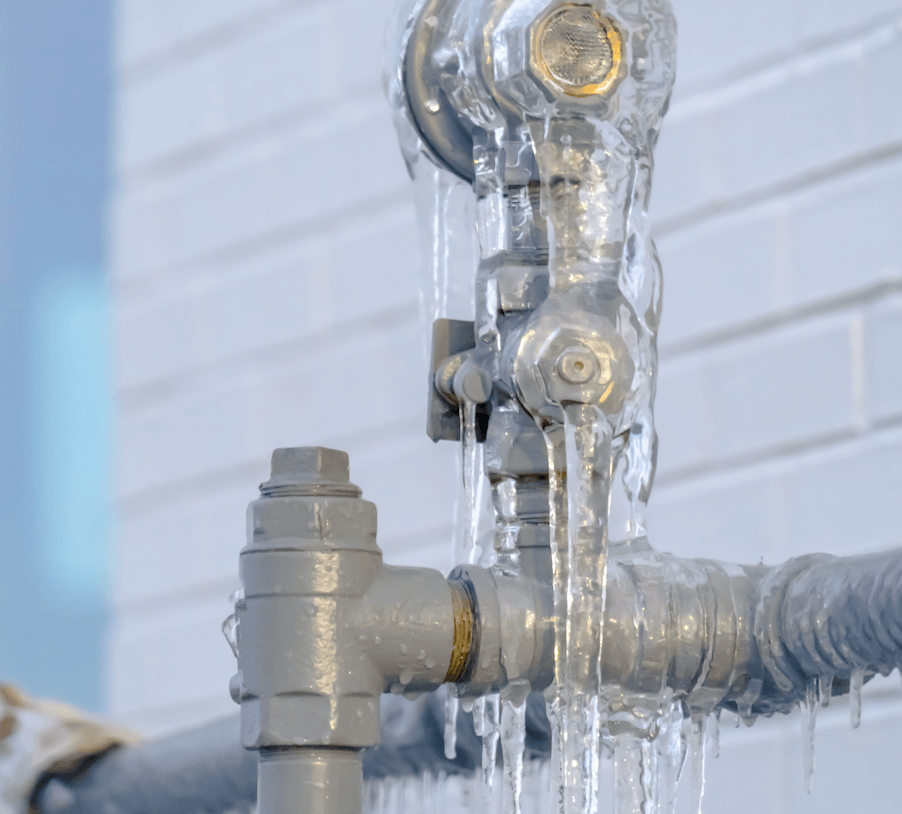Important Tips to Avoid Frozen Pipes in Cold Weather: Expert Insights
Important Tips to Avoid Frozen Pipes in Cold Weather: Expert Insights
Blog Article
We've stumbled on this article pertaining to How to prepare your home plumbing for winter weather below on the net and reckoned it made perfect sense to relate it with you on this page.

Cold weather can ruin your plumbing, especially by freezing pipelines. Here's how to prevent it from taking place and what to do if it does.
Introduction
As temperatures decrease, the threat of icy pipes boosts, potentially bring about costly repair services and water damages. Comprehending just how to prevent frozen pipes is important for home owners in cold climates.
Understanding Icy Pipelines
What triggers pipelines to ice up?
Pipelines freeze when revealed to temperature levels listed below 32 ° F (0 ° C) for expanded durations. As water inside the pipelines freezes, it broadens, putting pressure on the pipeline wall surfaces and possibly causing them to rupture.
Dangers and damages
Icy pipes can cause supply of water disruptions, property damages, and expensive repair services. Burst pipelines can flood homes and create substantial structural damages.
Signs of Frozen Piping
Determining icy pipes early can stop them from rupturing.
Just how to determine frozen pipelines
Look for reduced water circulation from faucets, uncommon smells or noises from pipes, and noticeable frost on revealed pipes.
Prevention Tips
Shielding vulnerable pipes
Wrap pipelines in insulation sleeves or make use of warmth tape to secure them from freezing temperature levels. Concentrate on pipelines in unheated or exterior areas of the home.
Heating techniques
Keep interior areas adequately heated, especially areas with pipes. Open up closet doors to allow cozy air to distribute around pipelines under sinks.
Securing Outside Pipes
Yard tubes and exterior taps
Disconnect and drain pipes garden hose pipes before wintertime. Install frost-proof spigots or cover outside taps with protected caps.
What to Do If Your Pipes Freeze
Immediate actions to take
If you suspect icy pipelines, keep taps available to ease pressure as the ice thaws. Use a hairdryer or towels taken in hot water to thaw pipelines slowly.
Long-Term Solutions
Architectural adjustments
Think about rerouting pipelines away from outside walls or unheated areas. Include extra insulation to attics, cellars, and crawl spaces.
Upgrading insulation
Purchase high-quality insulation for pipes, attic rooms, and wall surfaces. Proper insulation assists preserve regular temperature levels and reduces the danger of icy pipelines.
Verdict
Avoiding frozen pipes needs positive procedures and fast feedbacks. By recognizing the reasons, indicators, and safety nets, home owners can shield their pipes during cold weather.
5 Ways to Prevent Frozen Pipes
Drain Outdoor Faucets and Disconnect Hoses
First, close the shut-off valve that controls the flow of water in the pipe to your outdoor faucet. Then, head outside to disconnect and drain your hose and open the outdoor faucet to allow the water to completely drain out of the line. Turn off the faucet when done. Finally, head back to the shut-off valve and drain the remaining water inside the pipe into a bucket or container. Additionally, if you have a home irrigation system, you should consider hiring an expert to clear the system of water each year.
Insulate Pipes
One of the best and most cost-effective methods for preventing frozen water pipes is to wrap your pipes with insulation. This is especially important for areas in your home that aren’t exposed to heat, such as an attic. We suggest using foam sleeves, which can typically be found at your local hardware store.
Keep Heat Running at 65
Your pipes are located inside your walls, and the temperature there is much colder than the rest of the house. To prevent your pipes from freezing, The Insurance Information Institute suggests that you keep your home heated to at least 65 degrees, even when traveling. You may want to invest in smart devices that can keep an eye on the temperature in your home while you’re away.
Leave Water Dripping
Moving water — even a small trickle — can prevent ice from forming inside your pipes. When freezing temps are imminent, start a drip of water from all faucets that serve exposed pipes. Leaving a few faucets running will also help relieve pressure inside the pipes and help prevent a rupture if the water inside freezes.
Open Cupboard Doors
Warm your kitchen and bathroom pipes by opening cupboards and vanities. You should also leave your interior doors ajar to help warm air circulate evenly throughout your home.

Do you like reading about Prevent Frozen Pipes ? Place feedback further down. We will be pleased to listen to your responses about this write-up. Hoping that you visit us again in the near future. In case you enjoyed our page kindly do not forget to share it. We recognize the value of your readership.
Schedule An Appointment Report this page